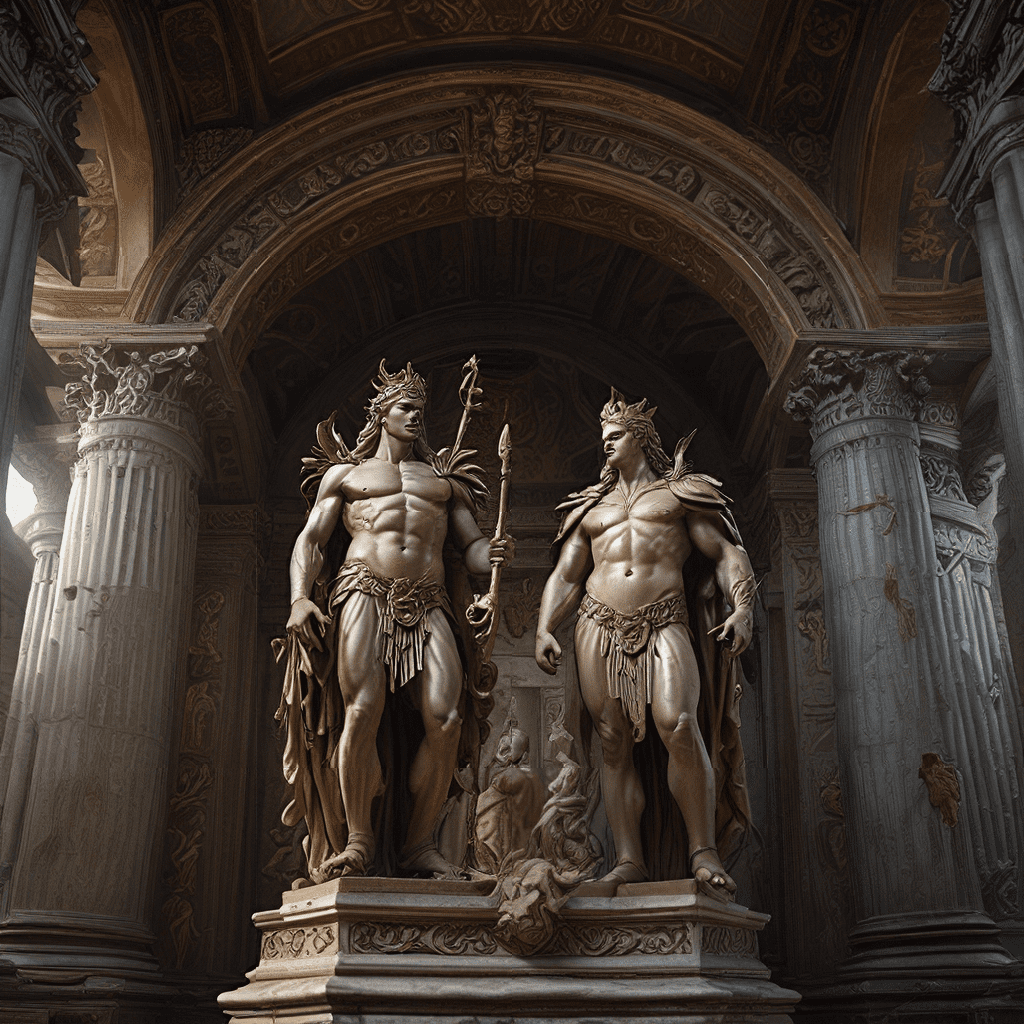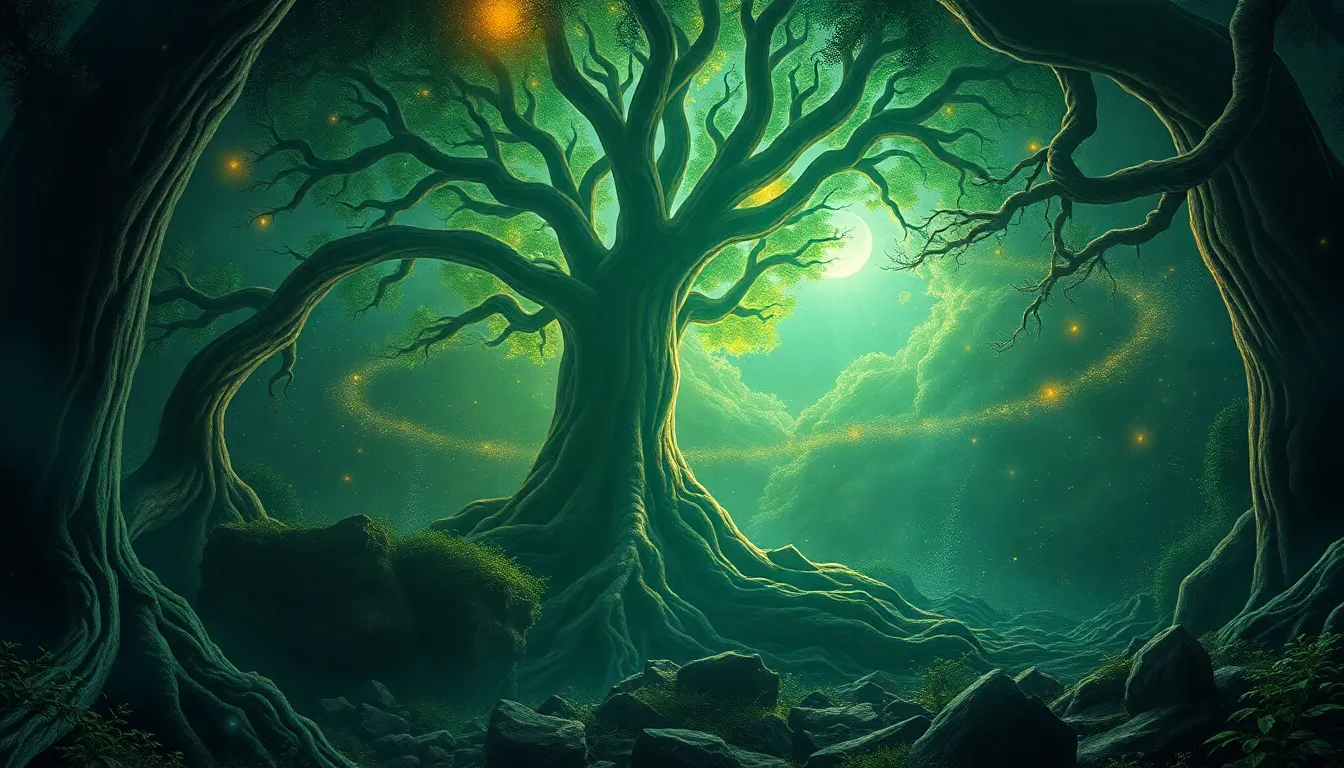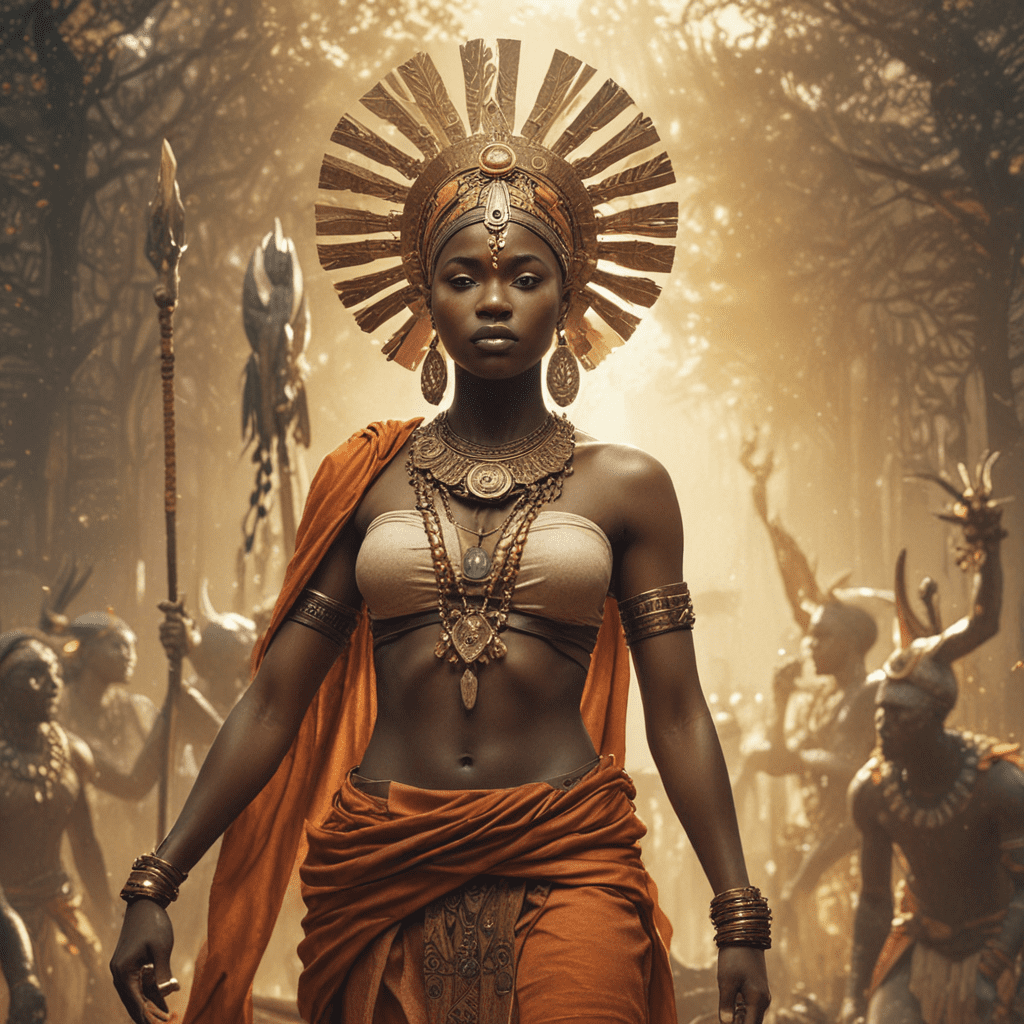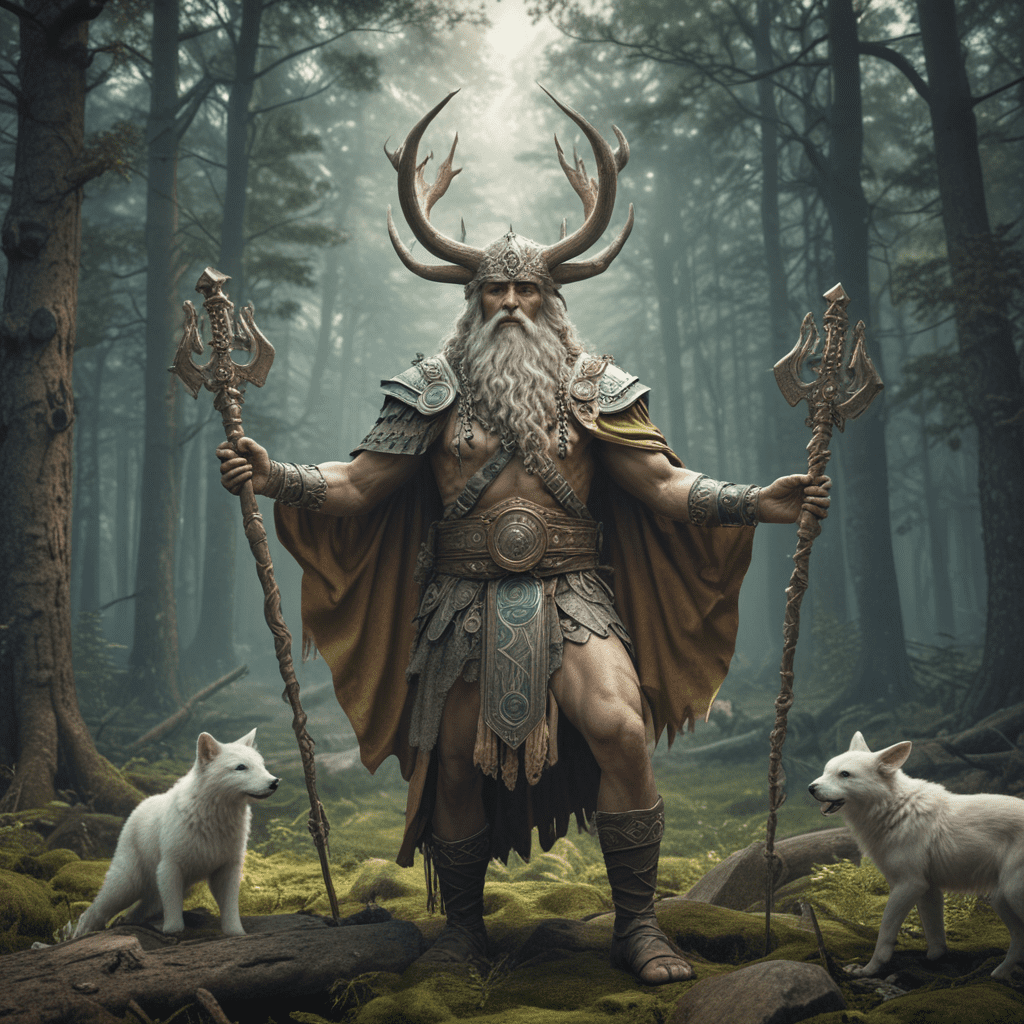The Intricate World of Baltic Mythology
The Baltic region, encompassing modern-day Latvia, Lithuania, and Estonia, boasts a rich tapestry of myths and legends, woven together to form a vibrant pantheon of deities. This intricate world of Baltic mythology, often referred to as 'Baltic paganism', offers a fascinating glimpse into the beliefs and spiritual practices of ancient Baltic people. While Baltic mythology has been significantly influenced by Christianity, its legacy continues to resonate in the cultural identity and folklore of these nations.
A Tapestry of Deities: Gods, Goddesses, and Spirits
Baltic mythology is populated by a diverse array of deities, spirits, and mythical creatures, each with unique roles and powers. These beings represent various aspects of nature, human life, and the cosmos. Central to this pantheon are the gods and goddesses who embody the forces that govern the world, shaping the destinies of both humans and the natural world. These deities are often associated with specific elements, such as thunder, fire, water, and the earth, highlighting the deep connection between the ancient Balts and the natural world.
The Divine Family: The Balts’ Primary Gods
At the heart of the Baltic pantheon, a group of primary deities holds sway. These gods represent the fundamental forces that shape the world and the lives of the Balts. They are often depicted as powerful beings with dominion over specific domains, acting as guardians and protectors of their respective realms. These deities are not just abstract figures but are often portrayed with human-like qualities, reflecting a complex understanding of the divine.
Perkūnas: The God of Thunder and Power
Perkūnas, known as the god of thunder, lightning, and power, is one of the most prominent and revered figures in Baltic mythology. He is often depicted as a powerful warrior, wielding a mighty hammer or axe, which he uses to unleash thunder and lightning. Perkūnas's powers are seen as both destructive and creative, as he is believed to be capable of both bringing storms and fertility to the land.
His importance is reflected in his close association with other deities, including the sun god and the earth goddess. This highlights the complex web of relationships that exists within the Baltic pantheon. Perkūnas is a god of both awe and fear, embodying the raw power of nature and the unpredictable forces that govern our world.
Dievas: The Supreme God, Ruler of the Heavens
Dievas, the supreme god, holds dominion over the heavens and all that lies within. He is the ultimate source of power, order, and justice in the Baltic world. Unlike Perkūnas, whose power is associated with the physical forces of nature, Dievas's power is more abstract, representing the divine order that governs the cosmos. While he is rarely depicted in stories, his presence is felt throughout Baltic mythology.
Dievas is often portrayed as a benevolent figure, protecting the Balts and ensuring the natural order. In some stories, he is depicted as the father of other gods, further solidifying his position as the supreme ruler of the pantheon.
Jūratė: The Goddess of the Sea and its Depths
Jūratė, the goddess of the sea, embodies the mysterious and powerful forces of the Baltic waters. Her realm is a world of deep, dark depths, home to mythical creatures and hidden treasures. Jūratė is often depicted as a beautiful and regal figure, adorned with pearls and seaweed, representing the beauty and power of the sea. She is also known for her wisdom, acting as a protector and guardian of the marine world.
Jūratė's story is one of love, loss, and the consequences of defying the natural order. She is said to have fallen in love with a fisherman named Kastytis, a union that angered the god of the sea, who punished Jūratė by imprisoning her in the depths of the sea. This story highlights the themes of forbidden love, the consequences of defying the divine, and the power of nature's wrath.
Laima: The Goddess of Fate and Destiny
Laima, the goddess of fate and destiny, weaves the threads of life, determining the course of each individual's journey. She is present at every birth, shaping the destiny of each newborn child. Laima is often depicted as a spinning woman, her spindle and thread representing the interconnectedness of life, death, and fate.
Laima's role is both benevolent and foreboding, representing the unpredictable nature of life. She is a reminder that our destinies are intertwined with the forces that govern the world. While she is often seen as a bringer of good fortune, she is also capable of bringing misfortune and suffering. This reflects the ancient Balts' acceptance of the complex and unpredictable nature of life.
Velnias: The Trickster and Lord of the Underworld
Velnias, the trickster and lord of the underworld, represents the dark and chaotic forces that exist alongside the divine. He is often depicted as a cunning and mischievous figure, always seeking to outsmart and deceive humans. Despite his reputation as a bringer of misfortune, Velnias is also considered a bringer of knowledge, representing the hidden truths and secrets of the world.
Velnias is a complex figure, embodying the dualistic nature of good and evil, truth and deception. He is a reminder that the world is not always black and white, and that there is a hidden side to everything. The stories of Velnias serve as cautionary tales, warning of the dangers of greed, pride, and lack of respect for the divine.
The Afterlife and the Realm of the Dead
The Baltic people believed in an afterlife where the souls of the departed journeyed to a realm known as "Anapilis." This realm was a mysterious and often-feared place, governed by different rules and customs than the world of the living. The afterlife was not necessarily a place of punishment or reward, but rather a continuation of life in a different form.
The journey to the afterlife was often fraught with dangers, including the need to cross treacherous waters and navigate through dark forests. The deceased were often buried with objects and offerings that would help them on their journey. These choices were often based on the individual's life and status, reflecting the importance of social order even in death. The Baltic concept of the afterlife emphasizes the complex relationship between the living and the dead, and the enduring connection between the material world and the spiritual realm.
Influence and Legacy: The Enduring Presence of Baltic Mythology
Baltic mythology continues to exert a powerful influence on the culture, folklore, and identity of Latvia, Lithuania, and Estonia. Elements of Baltic mythology can be found in art, literature, music, and other forms of cultural expression. The legacy of Baltic paganism is a reminder of the deep connection between people and their environment, the complex relationship between the divine and the mortal, and the enduring power of myth and legend. These stories and beliefs continue to offer insight into the cultural and spiritual traditions of the Baltic people.
FAQ
Q: What is the main source of information about Baltic mythology?
A: The main sources of information about Baltic mythology include folklore, ancient texts, archaeological evidence, and ethnographic studies. These sources provide a glimpse into the beliefs and practices of the ancient Baltic people.
Q: How did Christianity influence Baltic mythology?
A: The spread of Christianity in the Baltic region led to the suppression of Baltic paganism. Many Baltic deities were reinterpreted within the Christian framework, while others were dismissed as pagan superstitions. However, elements of Baltic mythology continued to survive in folklore and oral traditions.
Q: What are the key themes of Baltic mythology?
A: Key themes of Baltic mythology include the importance of nature and the divine forces that govern it, the relationship between humans and the natural world, the concept of destiny and fate, and the belief in an afterlife.
Q: How is Baltic mythology relevant today?
A: Baltic mythology offers a unique perspective on humanity's place in the world. It explores universal themes such as life, death, fate, and the natural world. It also provides a window into the cultural identity and heritage of the Baltic people. Today, Baltic mythology enjoys a revival in popular culture, inspiring artists, writers, and musicians.



